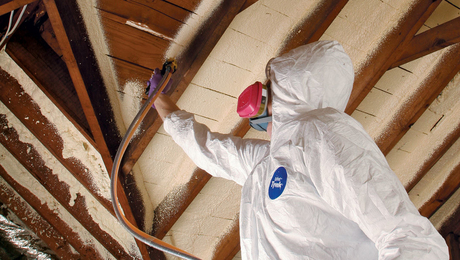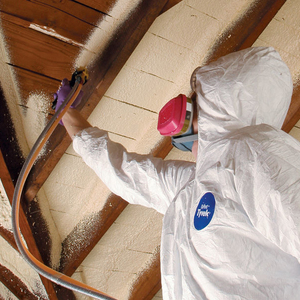Installing cabinet hardware with a template. Should I use a straight edge too?
Still completing kitchen remodel. I’ve got 25 cabinets in this u-shaped layout to install hardware on. All doors will have knobs. All drawers will have pulls. Most of the cabinets will have a hardware pattern that repeats along the run. I have a template for drilling holes, but I’m concerned about maintaining symmetry as I go around the room, especially on the deep drawer fronts where the template is lacking. I’ve already adjusted all of the doors and drawer fronts. They aren’t ideal, but they aren’t far off, either. I’ve managed to minimize any gaps and unevenness.
I’m wondering whether I should use the template alone to install the hardware, or if I should use a straight edge across the face of the cabinets to establish a level plane, making a light reference mark on some painter’s tape as I go, then align the template to both the cabinet front and that line. I’m reasoning that a reference line will not only keep knobs level between adjacent doors, but adjacent cabinets as well. But I also understand that getting the geometry exact and pleasing the eye aren’t always conducive.
Am I over-thinking this? I’d appreciate your thoughts



















Replies
MW
I've always made my own templates for the doors-label them with the customers name for later use if necessary.
They are usually 1/4" or 3/8's ply with a 3/4" or so strip on one long and short side (both sides of the ply-aligned ). I mark and drill the pull or knob holes on that ply so that I can place it over the door and pull it up and over to the strips. This registers the holes to the 2 edges of the doors.
ALL DOORS are drilled the same in relation to the door edge and bottom or top (except for oversized or specialty doors). This jig works for uppers and lowers where the holes are located somewhere near the top or bottom edge.
Rarely do I center (up/down) cabinet door holes in a kitchen.
It is important to keep them all the same-adjustments for doors should be done to align the doors to themselves-the knobs will in that case be perfect to each other. Do Not drill knobs to even up out of whack doors.
USE a BACKER block on the backside of the doors-you drill through the door and into the block-not into your finger and this also prevents splintering out. I use a brad point bit-this does not wander like a reg. twist drill bit.
Drawers are always different in width and depth so I usually measure them for the holes and like you suggest-mark on masking tape (don't use the colored painters tape-too hard to see). I have made jigs for drawers in a similar method to the door jig (but that's for gargantuan kitchens with a boatload of the same size drawers).
MEASURE THESE SEVERAL TIMES-step back look, think and be careful. I always use a backer block held to the backside of the drawer box and drill into it.
Drawer fronts-these sometimes are oriented more for the outside appearance than for how they mount to the drawer box themselves-be careful that your layout will not come through partially into the box and not fully in that box. Makes for an unpleasing hole location within the box.
They usually supply two screws in the hardware package for doors and/or drawers. However, you will find that something isn't kosher with their length. I carry "breakoff" screws (along with all the leftovers from previous kitchens). These can be easily made to the proper length so they fit both the knob depth and the door/drawer thickness. REMEMBER-screws are sized in both metric and inch-.
One more thing-if you use a door jig (made or bought) and use the backer drilling block-it will be impossible to drill the knob/pull hole on the wrong side of door. You need to open the door to drill-and no I have never drilled the wrong edge of a door-but have seen and heard of it being done.
Screwed up a drawer hole location? Once-that's all it takes to smarten you up.
Thanks, Calvin. I thought about trying to fabricate my own jig. The template I have only has a lip for one edge, so I'll have to scrutinize the placement each time. That sort of undermines the whole point of having a template. Nicer templates are available, but not worth the expense for one project (unless I really screw up).
I almost always center punch before drilling. I don't trust a backing block to avoid breakout. I've had breakout occur in spite of it. I prefer to drill until the bit just begins to protrude and then complete the hole from the opposite side. That method seems to work best for me. Of course, that only works when you can get the drill to both sides. Otherwise I do use a backing block, or at the very least some kind of tape.
Speaking of tape, you must be using that dark-colored painter's tape. I use typically use the light blue 3M painter's tape and a pencil. In most case, I can see the mark ok. Kraft paper and painter's tape are used generously in most of my projects. I learned the benefits of that from this forum. I just wish that friggin tape didn't cost so much. Sheesh!
As for the drawer fronts, I can find the centers easy enough by identifying the middle of my template and using a split-distance tape measure to center it. The problem is that my template doesn't hang over far enough on the deeper drawers and I've got quite a few of them to do, in various sizes. I'm thinking the reference line would at least help keep everything on the same plane.
I'm gonna give some more thought to making my own jig.
Thanks, again.
Calvin's post gives the detailsof years of experience for the whole process, and will help you (and many of us) avoid many non-correctible goofs.
As a direct answer to the question of template vs straightedge, it comes down to a question of perception: which method will give the viewer's eye the most pleasing, least disturbing appearance?
I believe you will find that any small discepancies in positioning the hardware in relation to the nearby edges and corners of each door or drawer front will be easier for the eye to detect than any small variations from one door or drawer to the next, simply because the distances are much greater.